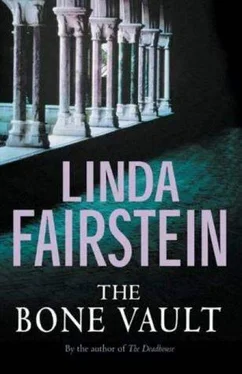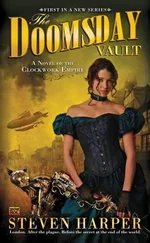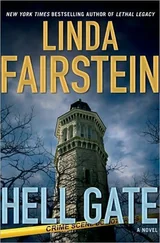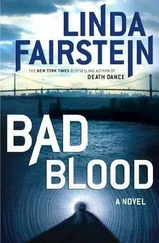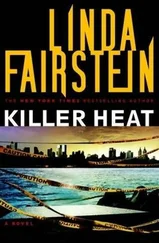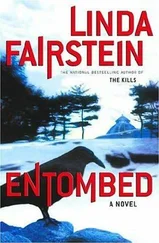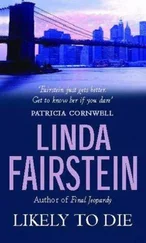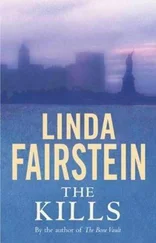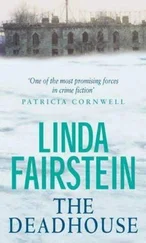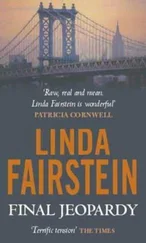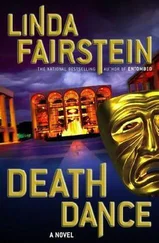“We haven’t heard from you, Mr. Socarides. Tell us your impressions of Katrina.”
He had seemed content to be resting his head against the back of his chair, letting the others take the lead. He sat upright, slowly. “Never met her until we started to put the show together. Loved her animals, the girl did. Endeared herself to me.”
“What was it about them that you think attracted her?”
“Who doesn’t like animals, Ms. Cooper?” He became animated, wagging a finger at me. “Now on your television crime shows,that would be your serial killer. Someone who hated furry creatures, tortured them as a child. Isn’t that always the way to find the killer?”
“I’m talking about the victim for the moment. What was it she liked about your animals?”
“This exhibition is all about animals, young lady. Katrina found examples of dozens of symbolic beasts from her medieval art, and then I introduced her to the real ones. Okapi, elands, Grevy’s zebras, reticulated giraffes.”
“Dead ones.”
“Well, obviously, Mr. Chapman. This is a museum, not a zoological society.”
“The ones you stuff for display?”
“Precisely.”
“She ever watch you-or your staff-prepare one of those mountings?”
“No. Not that I’m aware of. The beasts and the bones, she liked both of those. I don’t think she liked the whole process of using the skins to re-create the animals. A bit too Hannibal Lecter for her, I’m sure.”
“What do you mean by ‘the beasts and the bones’?”
“Well, Ms. Cooper, Katrina loved the animals. They were all African, keep in mind. Maybe that’s what she liked. And she had a real fascination with the bones. Never tired of looking at the bones. Wanted to know everything I knew about the bones.”
Millions of them, as I recalled. Not so unusual, I thought to myself, for a woman whose specialty was funerary art.
“And I must interject, Anna,” Socarides said, before he slumped back into his seat. “Nobody ever told me the girl had been raped. I don’t know what you’re making such a fuss of it for.”
“I never claimed to have toldyou about it, Richard. I had no idea she was so taken with your, your…beasts,” she said dismissively. Anna was determined to show off her close relationship to Katrina. “In fact, I had no idea you’d paid her a bit of mind outside this room.”
It was ordinarily my habit to interview each witness alone, which we would attempt to do later on, but Mike’s idea to bring the group together brought out talons on each that might not have been visible one-on-one.
“You seem to think you had the market cornered on her friendship, Anna. She was actually quite surprised to learn how weak the Met’s history was in your very own specialty, African art.”
“Katrina was hardly what I would call African, would you, Elijah? She was Dutch. Boer. About as primitive as Erik.” Anna laughed at her inside joke.
“Are you Dutch, too?” I asked Poste, remembering that Ruth Gerst had told us his father was a great explorer and hunter who had taken museum trustees on African safaris and shoots.
“Yes, by birth. But we moved here when I was a child, and I grew up in the States.” He seemed embarrassed by the petty squabbling among the museum staff members.
“What did Mr. Socarides mean when he said your department at the Met was weak?”
Anna went on, “Until very recently in museum terms-the late 1960s-the Metropolitan had no interest in what we call the primitive arts. We were terribly underrepresented in my field. The trustees at the time looked on all of it as sort of airport art-Mayan sculptures, African masks, New Guinea ancestor poles. It wasn’t until Nelson Rockefeller gave his entire collection to the museum that we began to be competitive in this field.”
Mamdouba’s irrepressible grin reemerged. “Ah, tell the truth, Anna. Most of your distinguished trustees think all these aboriginal faces belong inour museum, don’t they?”
Bellinger and Poste had to smile along with him. But Anna snapped, “These are works of art, Elijah, every bit as beautifully crafted as the sculptures of the ancient Greeks. In your museum they just become cultural specimens, totem poles stuck next to igloos and canoes.”
“I’m glad Timothy Gaylord isn’t here,” Socarides said. “He’d be apoplectic hearing you compare some of those drooping-breastedNational Geographic figures of yours to his precious Egyptian carvings.”
Mamdouba bowed his head in my direction. “This is a centuriesold dispute, Miss Cooper, not likely to be resolved today. Miss Friedrichs and I often battle for acquisitions. My colleagues and I believe that primitive objects are much better respected under our aegis.”
Friedrichs walked to the coffeemaker and refilled her cup. People shuffled papers and pretended not to notice the silence.
Mike Chapman tried another topic. “I’m gonna ask you to do some word association now. What do you think of when I say the wordvault? What does it mean in your work, or in the museum?”
Friedrichs didn’t want to play anymore. She looked straight ahead and ignored the question. I thought of her disorderly conduct arrest and imagined her planted in the middle of the street with her picket sign in defiance of police instructions to move on.
Erik Poste leaned forward, his hand on his chest. “I suppose I can give you the definition, Detective. It’s an architectural term, illustrated quite often in paintings. In fact, you both saw vaulted areas the day we took you around the basement of the Met. Vaults are a series of arches that radiate from a central point, used to make a roof in a building’s interior.”
“In my business, that’s what the medievalists called burial chambers. They were mostly underground, in churches and cathedrals, so they were called vaults,” Bellinger said.
“Funny how it conjures such a different image to me,” Socarides said. “Those are our storage cabinets. I’ve got my assorted mammal bones in tusk vaults and boar vaults and shrew vaults. But then, Erik’s my expert on museum history, if that’s what you’re looking for. Grew up in these places-it’s in his blood.”
I thought again of our conversation with Ruth Gerst about Poste’s father. Erik might be the one to know something about private vaults.
“I understand that there are some personal storage rooms that wealthy contributors were able to keep in the museums.” I looked to Mamdouba. “Might you have a list of those names?”
“Not here, madam. We’ve had no such thing that I’m aware of.” The smile had vanished and he was quite firm in his denial.
“Are you saying you’re not aware of any, or that there aren’t any? I’m going to ask you to check with President Raspen and consult your archives. Surely, Mr. Poste, you know something about that tradition.”
Everyone turned to stare at Erik Poste. “I, uh, I know they’ve been rumored to exist at the Met. Three or four of them at most.”
Mike wanted to prove to the group that he had this on better information than rumor. “The Arthur Paglin vault. Others like that?”
Poste shrugged his shoulders. “Paglin had the great Egyptian collection. Gaylord would know more about that than I do.”
“What became of your father’s collections?” I asked Poste, who had pursued such a different line of scholarship from Willem, as Ruth Gerst had described it to us.
“You know about him, do you?” He looked pleased that I was familiar with his father’s work.
“Not very much. But I’ve heard he made great contributions to this museum.”
“I was twelve years old when he died, Miss Cooper. Killed by native poachers when he was leading an expedition. Greedy and ignorant men who took his life simply because he stood between them and some ivory animal horns. Killed because of the power of their superstition. My older brother, Kirk, remained on, in Kenya, doing my father’s work. He’d be the one to ask about my father’s contributions.”
Читать дальше
